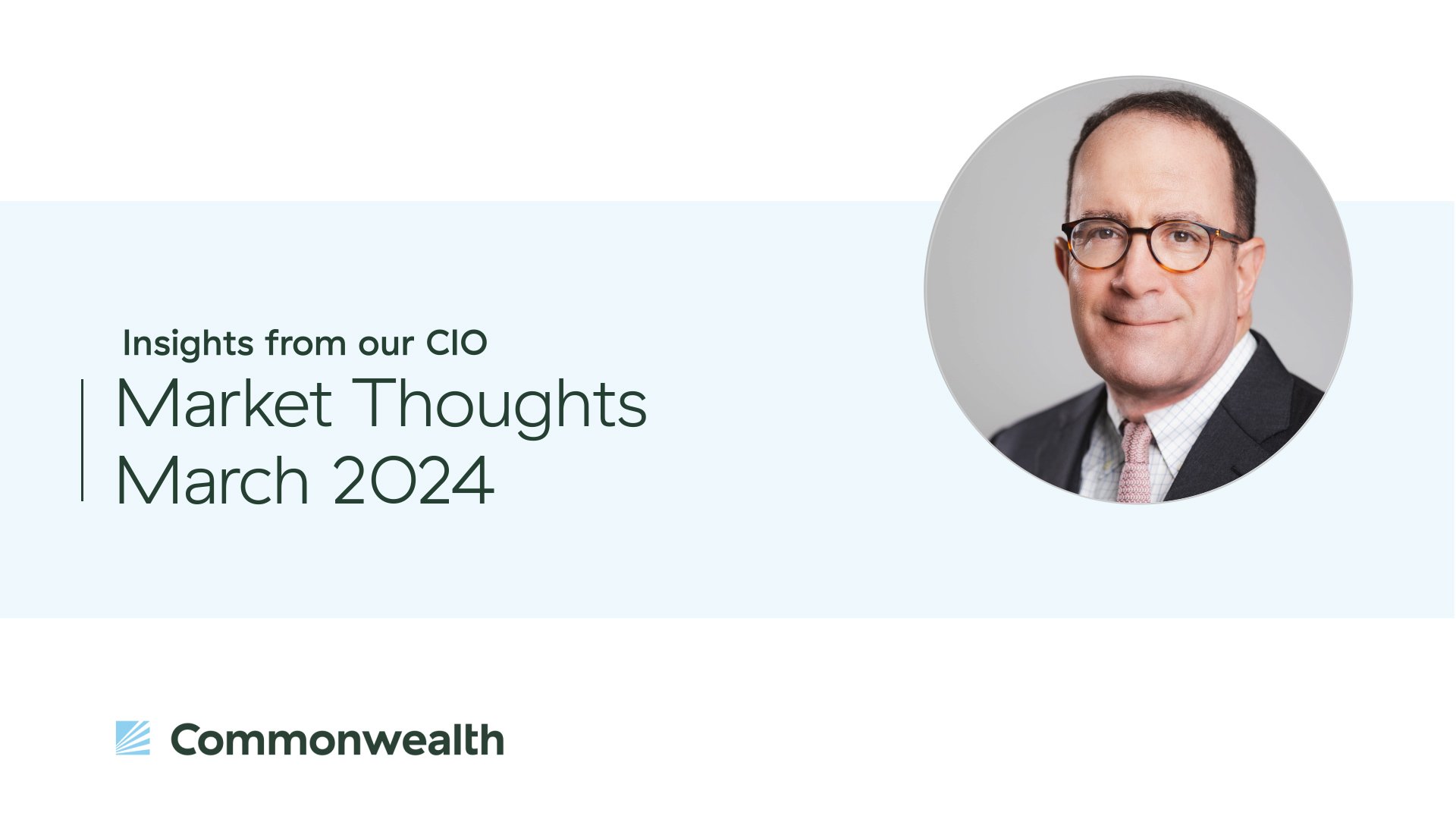Stocks performed well in February, with most markets up in the low- to mid-single digits. The Nasdaq and emerging markets did especially well, but fixed income declined as interest rates rose. Job, income, and spending growth remained positive, but these results kept inflation up.
News
Economic Release Snapshot: Personal Income and Spending Grow in January
Each week, we break down the latest U.S. economic reports, including what the results mean for the overall health of the economy. Here, you will find how economists’ forecasts compare with actual results, key takeaways to consider, as well as a list of what’s on tap for the week ahead.
A Start to Remember for the Markets
In my last blog, I talked about how strong Januarys historically tend to lead to strong returns throughout the remainder of the year. But I also noted there could be a bit of volatility in February. To my surprise, this turned out to be one of the better Februarys the S&P 500 has ever had, finishing the month up 5.17 percent.
Economic Release Snapshot: Existing Home Sales Rise in January
Each week, we break down the latest U.S. economic reports, including what the results mean for the overall health of the economy. Here, you will find how economists’ forecasts compare with actual results, key takeaways to consider, as well as a list of what’s on tap for the week ahead.
A Portfolio Manager’s View on Markets
Most people know Yogi Berra as the Hall of Fame catcher and 10-time World Series champion with the New York Yankees. Many also know him as an unintentional philosopher, with famous quotations including “It’s like déjà vu all over again.” One Yogi saying I find myself thinking about frequently is this: “No one goes there anymore. It’s too crowded.” Here, Yogi was referring to a popular restaurant in Fort Lauderdale where the Yankees were having spring training. But it seems applicable to the conversations that we have daily.
Economic Release Snapshot: Inflation Comes in Hot in January
Each week, we break down the latest U.S. economic reports, including what the results mean for the overall health of the economy. Here, you will find how economists’ forecasts compare with actual results, key takeaways to consider, as well as a list of what’s on tap for the week ahead.









 Client Relationship Specialist
Client Relationship Specialist




 Ashley has been working in the customer service field since she started her first job at age 16. For the past ten years she worked in an office setting handling accounts payable and receivable as well as some receptionist work. She is very excited to learn more about the investment field.
Ashley has been working in the customer service field since she started her first job at age 16. For the past ten years she worked in an office setting handling accounts payable and receivable as well as some receptionist work. She is very excited to learn more about the investment field. Client Relationship Specialist II
Client Relationship Specialist II Vice President of Operations and Integrator
Vice President of Operations and Integrator Wealth Advisor
Wealth Advisor Senior Client Relationship Specialist
Senior Client Relationship Specialist Senior Wealth Advisor
Senior Wealth Advisor Wealth Advisor | Director of Business Development
Wealth Advisor | Director of Business Development Wealth Advisor
Wealth Advisor Senior Wealth Advisor / Registered Principal
Senior Wealth Advisor / Registered Principal Senior Wealth Advisor / Registered Principal
Senior Wealth Advisor / Registered Principal